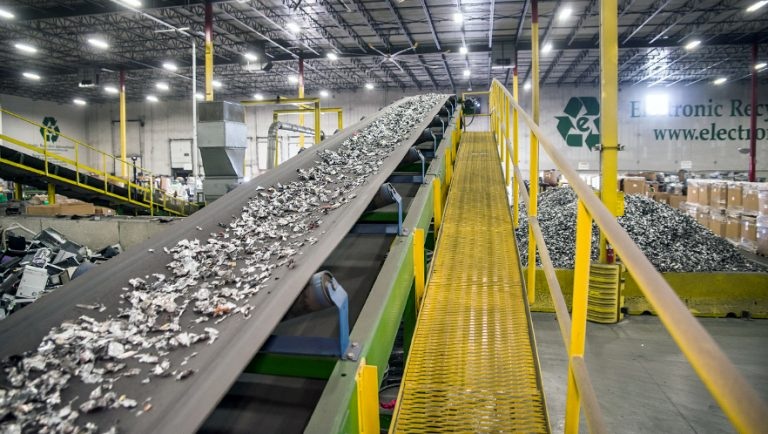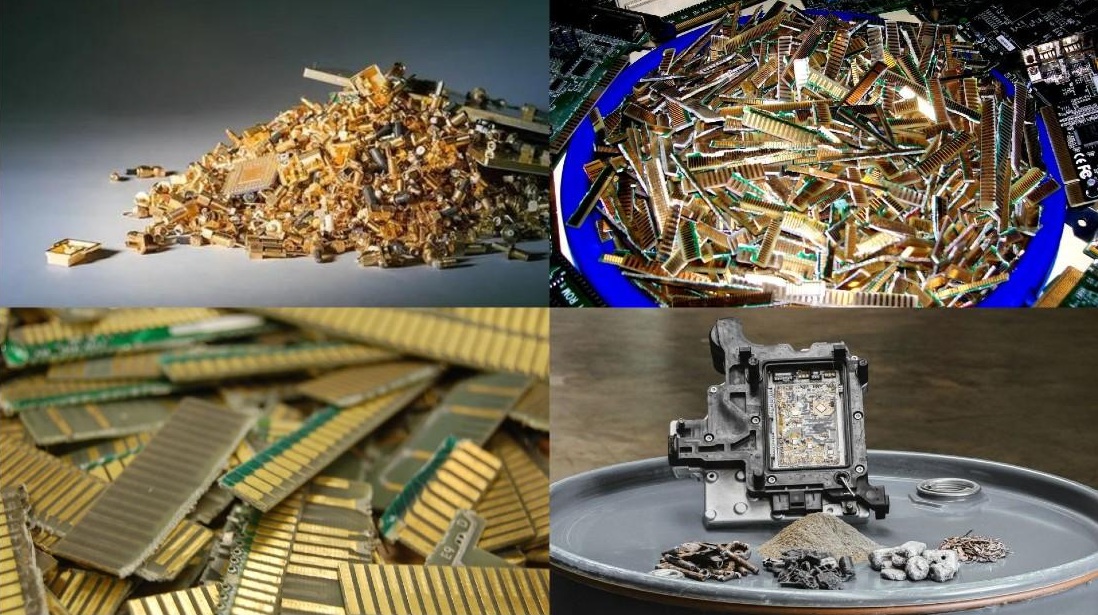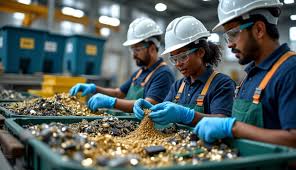Precious Metal Recovery
Precious metals such as gold, silver, and platinum group metals (PGMs) are essential materials widely used in electronics, automotive catalysts, jewelry, aerospace, medical devices, and various industrial applications. These metals possess unique properties like excellent electrical conductivity, resistance to corrosion, and catalytic activity, making them highly valuable and indispensable.
With increasing demand and the environmental and economic challenges of primary mining, recycling precious metals from industrial scrap, electronic waste, catalytic converters, and other sources has become a critical part of the global metals supply chain. Precious metal recycling supports sustainability, conserves natural resources, reduces pollution, and provides an economic avenue for recovering valuable materials from waste streams.
Why Precious Metal Recycling Matters
- Conserve finite natural resources by reducing dependency on mining.
- Reduce energy consumption and greenhouse gas emissions compared to primary metal extraction.
- Limit toxic waste and environmental damage associated with mining and refining.
- Support a circular economy by keeping metals in use through multiple lifecycles.
- Provide economic benefits by recovering metals of high intrinsic value.


Current Industry Landscape (2025)
Market Size & Growth
- The global precious metal recycling market was valued at approximately $552 billion in 2023, with a projected compound annual growth rate (CAGR) of 6.8% through 2031.
- The gold scrap recycling segment alone was valued around $13.5 billion in 2023 and is expected to reach nearly $30.6 billion by 2033.
- The electronic waste (e-waste) recovery market was worth about $10.7 billion in 2024, forecasted to grow to $14.6 billion by 2029.
Investments & Infrastructure
- Over $3.2 billion was invested globally in precious metal recycling infrastructure in recent years, focusing on robotics, artificial intelligence (AI)-enabled sorting, bio-leaching technologies, and closed-loop recycling plants.
- Modular and mobile recycling units have emerged to provide decentralized processing, reducing transport costs and improving flexibility.
Innovation & Technology
- AI and X-ray sorting systems now achieve up to 98% accuracy in material separation.
- Bio-leaching bacteria are being used to extract metals without harmful chemicals.
- Development of non-cyanide hydrometallurgical processes makes recovery safer and environmentally friendlier.
- Mobile plants allow on-site processing of e-waste, catalysts, and battery materials.
Supply & Demand Trends
- Precious metals like platinum and silver are experiencing structural supply deficits, driven by rising industrial demand and limited scrap availability.
- Platinum prices surged approximately 44% year-to-date in 2025, reflecting shifting investor interests and supply challenges.
- Recycling efforts have not yet fully compensated for these deficits, increasing the strategic importance of recovery.
Regulatory & Trade Dynamics
- New tariffs and import restrictions (e.g., U.S. tariffs on scrap metals) encourage domestic recycling and investment in local infrastructure.
- Increasing regulatory requirements mandate transparent and verifiable recycling practices and limit the use of terms like “recycled gold” without proper certification.
Geographic & Market Segments
- Asia-Pacific leads the global market, accounting for approximately 34% share, driven by large electronics manufacturing hubs and sustainability initiatives.
- Europe and North America are also key markets, with strong regulatory frameworks and industrial recycling sectors.
- The gold recycling market dominates in terms of value (~45% share), while electronic equipment recycling represents the fastest growing segment (~10.2% CAGR).
Industry Challenges
- Price volatility can affect profitability and investment decisions.
- Illegal or informal recycling operations pose environmental and economic risks.
- Advances in mining and primary metal extraction technologies may reduce some demand for recycled materials.
Common Sources of Precious Metals
Gold (Au)
- Circuit boards, edge connectors, gold-plated components
- Dental crowns and bridges
- Jewelry scrap and manufacturing offcuts
Silver (Ag)
- Electrical contacts, relays, and sensors
- Medical instruments and solar panel films
- X-ray films, photographic waste, and silverware
Platinum Group Metals (PGMs)
- Automotive catalytic converters (platinum, palladium, rhodium)
- Chemical processing catalysts
- Thermocouple wires, laboratory crucibles, industrial sensors
Electronic Waste (E-Waste)
- Printed circuit boards (PCBs), CPUs, RAM modules
- Mobile phones, tablets, hard drives, server components
Dental & Medical Precious Metal Scrap
- Dental crowns, bridges, orthodontic appliances (gold, palladium, platinum)
- Surgical instruments, radiology films and fixers
Catalyst & Industrial Scrap
- Spent automotive and industrial catalysts
- Electroplating sludges, furnace linings, precious metal gauzes and meshes
Jewelry & Bullion Scrap
- Rings, watches, bullion bars and coins
- Manufacturing offcuts and scrap
Emerging Sources
- Solar panel manufacturing scrap (silver, indium, tellurium)
- Electric vehicle (EV) batteries
- Wearable electronics and telecom modules


Key Players in the Precious Metal Recycling Industry
| Category | Representative Companies |
|---|---|
| Integrated Refineries | Johnson Matthey, Heraeus, Umicore, Metalor, Asahi Refining |
| Non-Ferrous Metals Processors | Aurubis, Dowa Holdings |
| Urban/Modular Mining Innovators | Royal Mint, Cyclic Materials |
| Catalyst & Industrial Recyclers | Materion, Sino-Platinum, Abington Reldan |
| Specialty PGM Recovery | Auris Noble |
| Emerging Tech Innovators | Alkemio, Midas Labz |
Highlights
- Johnson Matthey, Heraeus, Umicore, Metalor, Asahi Refining: Global leaders in refining and recycling precious metals with advanced environmental standards and global footprint.
- Aurubis and Dowa Holdings: Key processors of non-ferrous and precious metals, focusing on complex scrap streams and industrial residues.
- Royal Mint and Cyclic Materials: Innovators in urban mining, modular recycling, and closed-loop precious metals recovery.
- Materion, Sino-Platinum, Abington Reldan: Specialized recyclers of catalysts and industrial scrap metals.
- Auris Noble: Focuses on high-value PGMs such as iridium and ruthenium, serving aerospace and telecom sectors.
- Emerging players (Alkemio, Midas Labz): Deploying modular, low-capital tech for decentralized recycling in emerging markets.
The precious metals recycling industry stands at the intersection of sustainability, innovation, and economic opportunity. With rising demand for critical metals, environmental imperatives, and technological advances, the sector is poised for significant growth and transformation.
Challenges remain, including market volatility and regulatory complexity, but global investments in advanced recycling infrastructure and processes are enabling more efficient and responsible metal recovery. Key industry players—from established refiners to emerging tech innovators—are driving this change, ensuring that precious metals continue to circulate in a sustainable and value-retentive manner.

